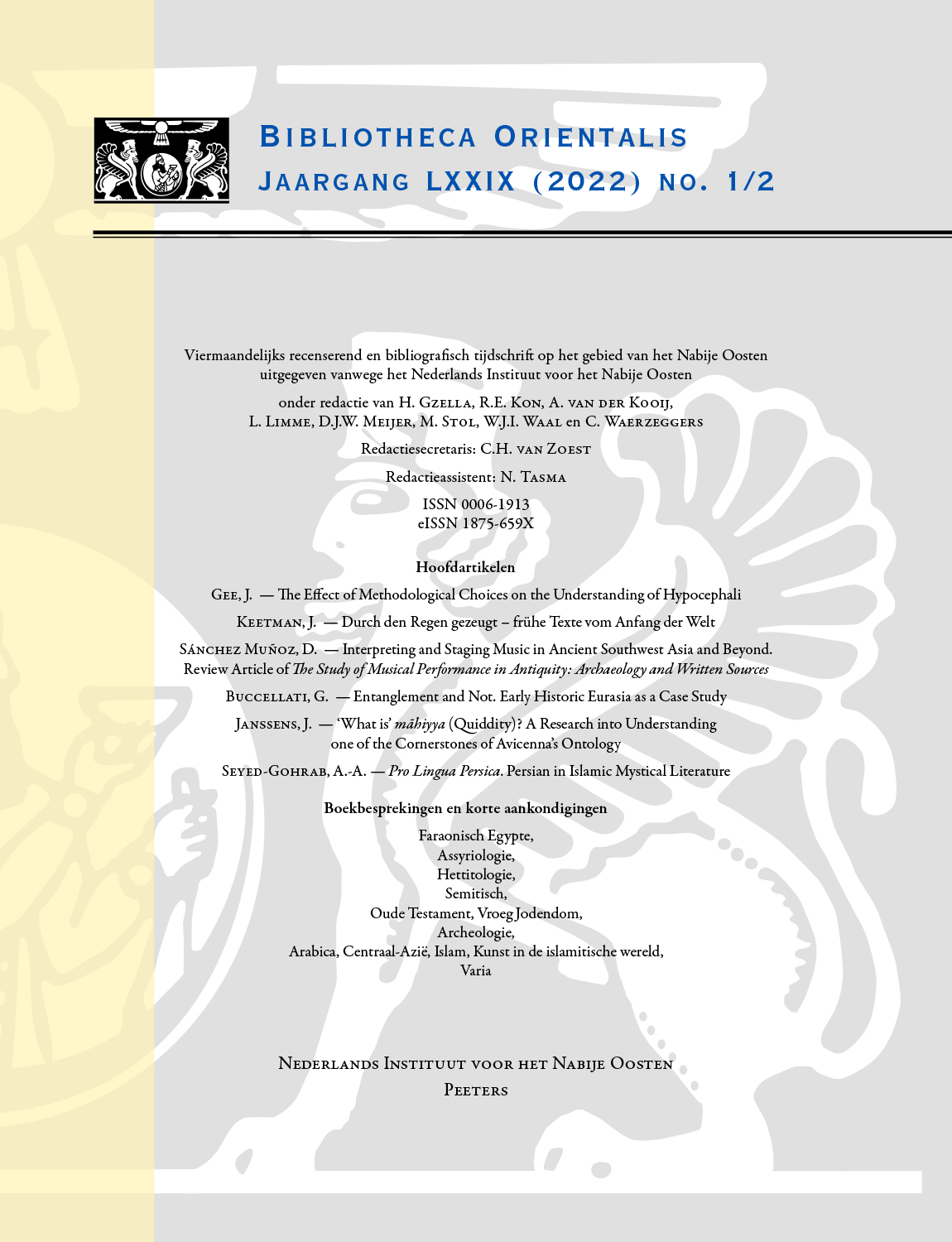 previous article in this issue previous article in this issue | next article in this issue  |

Preview first page |
Document Details : Title: The Moza Temple and Salomon's Temple Author(s): SHAPIRA, David Journal: Bibliotheca Orientalis Volume: 75 Issue: 1-2 Date: 2018 Pages: 25-48 DOI: 10.2143/BIOR.75.1.3285283 Abstract : Solomon’s Temple, as described in 1 Kings 6-7, has been discussed extensively in research. Since no archaeological evidence has been found, nor is it likely for any to be found in the future, researchers look for parallels in temples in the Ancient Near East. Searches conducted in temples from Assyria and Babylon, and from Anatolia have not yielded any actual results, as no parallels to Solomon’s Temple, with the required principal characteristics, have been found in those areas. The searches therefore focused on areas near Canaan, i.e. Syria, and from the country from which the builders and engineers of the temple originated – Phoenicia. The discovery of the temples in Tel Taayinat and in Ain Dara enthused the researchers and they agreed almost unanimously to regard them as parallel to Solomon’s Temple. Even though some elements in the exposed temples in Syria are similar to Solomon’s Temple, I will argue in this article that comparing them to the biblical description is far from satisfactory. In the excavation in Moza, near Jerusalem, over the past two years, a temple from the 9th century BC was exposed, that fits in almost all its components to Solomon’s Temple. Even though the excavation is not yet complete, one may learn from the discovered findings a great deal regarding the temple in Jerusalem and in this article, I will claim that this temple is the only parallel that we have to Solomon’s temple, as described in I Kings. |
 |


